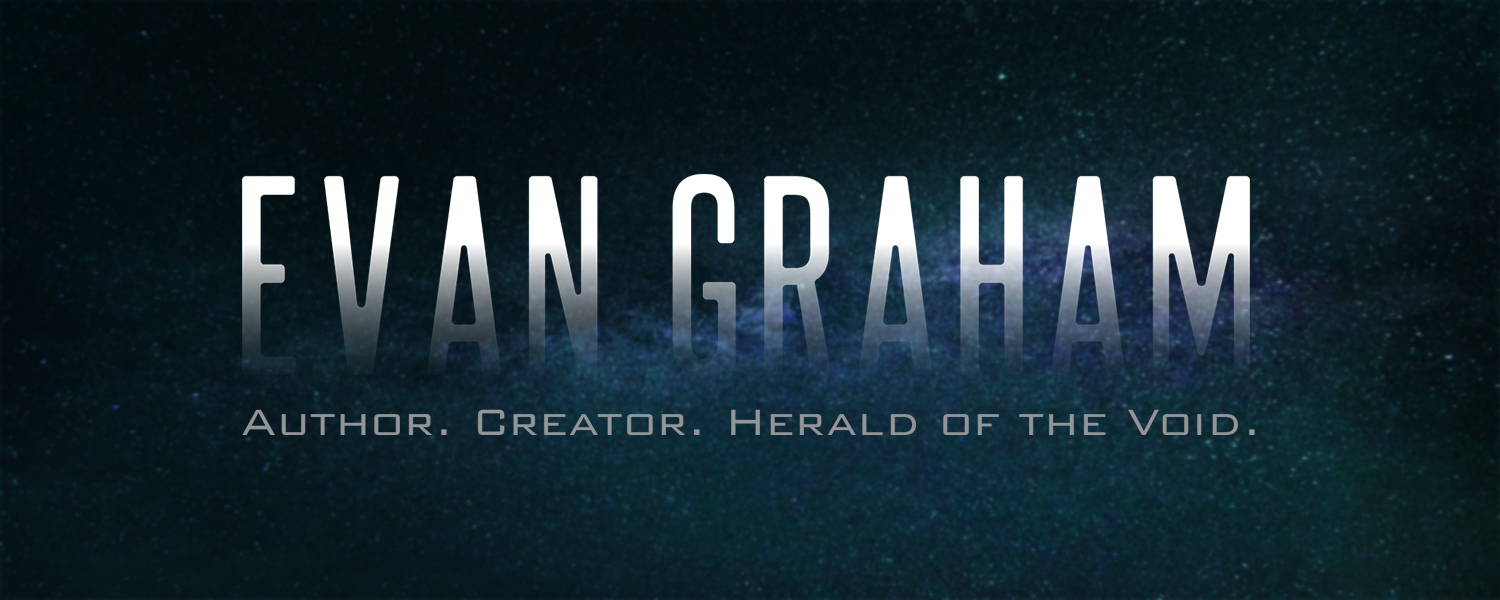Exotech Industries

“People who work for them long enough eventually have to make a choice between getting their paychecks and keeping their souls.“
~Dr. Ruth Schroeder
When young entrepreneur Vaughn Oberwelt founded a small research and development company out of a rented warehouse two years after the Corsica Event, no one could have predicted that it would ultimately become the most powerful megacorporation in history.
The path to Exotech’s success lay among the bones of its forbears. Many powerful megacorporations dominated the Earth’s economy in the last days before the Corsica Event, but few survived the Event itself. All the wealth and influence in the world was of little use when companies’ administrators died in tsunamis, or when the governments contracting them collapsed, or when their island tax havens sank entirely beneath the sea waves. Smaller companies with less to lose faired better, but most of the titans of late 21st century industry buckled and collapsed along with the economies they had so long controlled.
Though the Corsica Event ravaged the global economy, it also provided opportunities. The post-Corsica world had a great demand for infrastructure, especially construction, telecommunications, and transportation. Destitute though the world’s nations now were, they could not afford to skimp on their efforts to rebuild.
In its early days, Exotech sought its niche in the field of so-called “vulture coding:” a form of data mining popular in the first decade after the Corsica Event that involved salvaging usable sections of code from AI programs corrupted during the Event. While Exotech achieved modest success in these ventures, it would be Vaughn Oberwelt’s personal passion project that would launch the company’s meteoric rise.
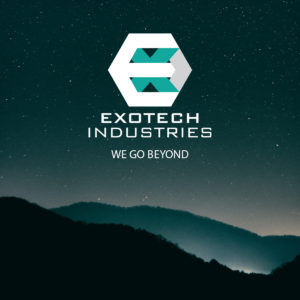
The Corsica Event left more than global devastation behind. An assortment of various enigmatic devices remained after the Event concluded and the AI became inert. These devices, called Corsica Relics, lay scattered across the Earth. While they came in varied shapes and sizes and seemed to possess different properties, each was a piece of technology so advanced as to be entirely incomprehensible to the human mind. Many of these devices seemed capable of bending or overtly breaking the laws of known physics. Believed to have been responsible for the cataclysmic effects of the Corsica Event, these relics inspired dread in all, though their ability to defy the perceived limits of space-time gave them an inherent allure to scientists. A desire to unlock the secrets of these relics and the mind of the transcendent AI that birthed them sparked a global technological arms race to successfully reverse engineer a Corsica relic.
It is not publically known how Vaughn Oberwelt succeeded in being the first to reverse engineer a piece of Corsica technology from a relic, as the data from those early findings remains Exotech’s most closely guarded secret. All that is known is that in 2099, Exotech revealed that they had successfully duplicated mass de-simulation technology, giving the small research and development company the overnight attention of the entire world.
Many corporations expressed immediate interest in acquiring the new technology for development and Oberwelt received dozens of offers to buy his research or the entire company for monumental sums of money. While the least of these offerings could have easily set Oberwelt for life, his ambitions were greater than mere fortune, and he refused all offers. Instead, he proceeded with his research into practical applications for mass de-simulation technology.
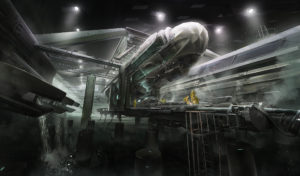
With the help of a few government grants and eager investors, it took only three years for Exotech to engineer the first superluminal drive: a revolutionary new starship propulsion system that would permanently rewrite the definition of “possible” when it came to space exploration. In a time where the Earth was starving for resources, Exotech had opened the door to an entire universe of possibilities; a door to which they alone possessed a key.
Every government and corporation with ambitions of exploring and harvesting the riches of distant worlds had no choice but to come to Exotech, and Exotech gladly gave them all they wanted, at a healthy profit. They built thousands of starships for anyone who could commission them, using the massive influx of cash to expand their business, both on Earth and beyond.
Exotech did not only construct ships for others. They built a massive corporate fleet of their own, and embarked on an immediate campaign to build permanent colonies and transitory mining outposts on virtually every planet, moon, and sizable planetoid in the solar system. Almost every space expedition in the first half of the 22nd century involved Exotech in some capacity, from the establishment of the first cities on Luna and Mars, to the construction of the skyborne habitats on Venus, to the strip-mining ventures in the Main and Kuiper asteroid belts. It was Exotech who launched the first serious colonization efforts on worlds outside our solar system, such as on Showalter and Samrat.
Exotech’s monopoly on mass de-simulation and superluminal drive technology would not last forever, however. In 2117, the Ming-Kosawa Corporation successfully developed their own version of the technology, followed soon after by several other competitors. While Exotech had a decades-long head start, the exclusivity of their drive technology had made them untouchable until that point. Now their lead was narrowing. Decades of unprecedented corporate supremacy have spoiled Exotech. Oberwelt and his directors have lived like royalty for years, and the prospect of losing their edge on the competition was unthinkable.
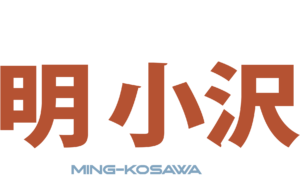
Following the loss of their monopoly, Exotech redoubled its efforts to find the next technological breakthrough. In secretive laboratories like the Squall Installation on Jupiter, hundreds of scientists work around the clock on dozens of Corsica Relics, in an endless labor to decipher the rest of their secrets. Elsewhere, Exotech researchers explore the mysteries of worlds like Samrat and Buyan, whose cosmic abnormalities hint at greater mysteries older than human civilization.
Wherever there is innovation to be made, Exotech leads the charge, pursuing its goals with relentless tenacity, and protecting their assets with the same unyielding vigilance. While they typically conduct their business through strictly legal (if not always strictly ethical) means, their offworld operations typically have almost no external oversight, and rumors abound on frontier colonies of all manner of atrocities Exotech has committed when left unaccountable for their actions.

Exotech Industries

“People who work for them long enough eventually have to make a choice between getting their paychecks and keeping their souls.“
~Dr. Ruth Schroeder
When young entrepreneur Vaughn Oberwelt founded a small research and development company out of a rented warehouse two years after the Corsica Event, no one could have predicted that it would ultimately become the most powerful megacorporation in history.
The path to Exotech’s success lay among the bones of its forbears. Many powerful megacorporations dominated the Earth’s economy in the last days before the Corsica Event, but few survived the Event itself. All the wealth and influence in the world was of little use when companies’ administrators died in tsunamis, or when the governments contracting them collapsed, or when their island tax havens sank entirely beneath the sea waves. Smaller companies with less to lose faired better, but most of the titans of late 21st century industry buckled and collapsed along with the economies they had so long controlled.
Though the Corsica Event ravaged the global economy, it also provided opportunities. The post-Corsica world had a great demand for infrastructure, especially construction, telecommunications, and transportation. Destitute though the world’s nations now were, they could not afford to skimp on their efforts to rebuild.
In its early days, Exotech sought its niche in the field of so-called “vulture coding:” a form of data mining popular in the first decade after the Corsica Event that involved salvaging usable sections of code from AI programs corrupted during the Event. While Exotech achieved modest success in these ventures, it would be Vaughn Oberwelt’s personal passion project that would launch the company’s meteoric rise.

The Corsica Event left more than global devastation behind. An assortment of various enigmatic devices remained after the Event concluded and the AI became inert. These devices, called Corsica Relics, lay scattered across the Earth. While they came in varied shapes and sizes and seemed to possess different properties, each was a piece of technology so advanced as to be entirely incomprehensible to the human mind. Many of these devices seemed capable of bending or overtly breaking the laws of known physics. Believed to have been responsible for the cataclysmic effects of the Corsica Event, these relics inspired dread in all, though their ability to defy the perceived limits of space-time gave them an inherent allure to scientists. A desire to unlock the secrets of these relics and the mind of the transcendent AI that birthed them sparked a global technological arms race to successfully reverse engineer a Corsica relic.
It is not publically known how Vaughn Oberwelt succeeded in being the first to reverse engineer a piece of Corsica technology from a relic, as the data from those early findings remains Exotech’s most closely guarded secret. All that is known is that in 2099, Exotech revealed that they had successfully duplicated mass de-simulation technology, giving the small research and development company the overnight attention of the entire world.
Many corporations expressed immediate interest in acquiring the new technology for development and Oberwelt received dozens of offers to buy his research or the entire company for monumental sums of money. While the least of these offerings could have easily set Oberwelt for life, his ambitions were greater than mere fortune, and he refused all offers. Instead, he proceeded with his research into practical applications for mass de-simulation technology.

With the help of a few government grants and eager investors, it took only three years for Exotech to engineer the first superluminal drive: a revolutionary new starship propulsion system that would permanently rewrite the definition of “possible” when it came to space exploration. In a time where the Earth was starving for resources, Exotech had opened the door to an entire universe of possibilities; a door to which they alone possessed a key.
Every government and corporation with ambitions of exploring and harvesting the riches of distant worlds had no choice but to come to Exotech, and Exotech gladly gave them all they wanted, at a healthy profit. They built thousands of starships for anyone who could commission them, using the massive influx of cash to expand their business, both on Earth and beyond.
Exotech did not only construct ships for others. They built a massive corporate fleet of their own, and embarked on an immediate campaign to build permanent colonies and transitory mining outposts on virtually every planet, moon, and sizable planetoid in the solar system. Almost every space expedition in the first half of the 22nd century involved Exotech in some capacity, from the establishment of the first cities on Luna and Mars, to the construction of the skyborne habitats on Venus, to the strip-mining ventures in the Main and Kuiper asteroid belts. It was Exotech who launched the first serious colonization efforts on worlds outside our solar system, such as on Showalter and Samrat.
Exotech’s monopoly on mass de-simulation and superluminal drive technology would not last forever, however. In 2117, the Ming-Kosawa Corporation successfully developed their own version of the technology, followed soon after by several other competitors. While Exotech had a decades-long head start, the exclusivity of their drive technology had made them untouchable until that point. Now their lead was narrowing. Decades of unprecedented corporate supremacy have spoiled Exotech. Oberwelt and his directors have lived like royalty for years, and the prospect of losing their edge on the competition was unthinkable.

Following the loss of their monopoly, Exotech redoubled its efforts to find the next technological breakthrough. In secretive laboratories like the Squall Installation on Jupiter, hundreds of scientists work around the clock on dozens of Corsica Relics, in an endless labor to decipher the rest of their secrets. Elsewhere, Exotech researchers explore the mysteries of worlds like Samrat and Buyan, whose cosmic abnormalities hint at greater mysteries older than human civilization.
Wherever there is innovation to be made, Exotech leads the charge, pursuing its goals with relentless tenacity, and protecting their assets with the same unyielding vigilance. While they typically conduct their business through strictly legal (if not always strictly ethical) means, their offworld operations typically have almost no external oversight, and rumors abound on frontier colonies of all manner of atrocities Exotech has committed when left unaccountable for their actions.
“People who work for them long enough eventually have to make a choice between getting their paychecks and keeping their souls.“
~Dr. Ruth Schroeder
When young entrepreneur Vaughn Oberwelt founded a small research and development company out of a rented warehouse two years after the Corsica Event, no one could have predicted that it would ultimately become the most powerful megacorporation in history.
The path to Exotech’s success lay among the bones of its forbears. Many powerful megacorporations dominated the Earth’s economy in the last days before the Corsica Event, but few survived the Event itself. All the wealth and influence in the world was of little use when companies’ administrators died in tsunamis, or when the governments contracting them collapsed, or when their island tax havens sank entirely beneath the sea waves. Smaller companies with less to lose faired better, but most of the titans of late 21st century industry buckled and collapsed along with the economies they had so long controlled.
Though the Corsica Event ravaged the global economy, it also provided opportunities. The post-Corsica world had a great demand for infrastructure, especially construction, telecommunications, and transportation. Destitute though the world’s nations now were, they could not afford to skimp on their efforts to rebuild.
In its early days, Exotech sought its niche in the field of so-called “vulture coding:” a form of data mining popular in the first decade after the Corsica Event that involved salvaging usable sections of code from AI programs corrupted during the Event. While Exotech achieved modest success in these ventures, it would be Vaughn Oberwelt’s personal passion project that would launch the company’s meteoric rise.

The Corsica Event left more than global devastation behind. An assortment of various enigmatic devices remained after the Event concluded and the AI became inert. These devices, called Corsica Relics, lay scattered across the Earth. While they came in varied shapes and sizes and seemed to possess different properties, each was a piece of technology so advanced as to be entirely incomprehensible to the human mind. Many of these devices seemed capable of bending or overtly breaking the laws of known physics. Believed to have been responsible for the cataclysmic effects of the Corsica Event, these relics inspired dread in all, though their ability to defy the perceived limits of space-time gave them an inherent allure to scientists. A desire to unlock the secrets of these relics and the mind of the transcendent AI that birthed them sparked a global technological arms race to successfully reverse engineer a Corsica relic.
It is not publically known how Vaughn Oberwelt succeeded in being the first to reverse engineer a piece of Corsica technology from a relic, as the data from those early findings remains Exotech’s most closely guarded secret. All that is known is that in 2099, Exotech revealed that they had successfully duplicated mass de-simulation technology, giving the small research and development company the overnight attention of the entire world.
Many corporations expressed immediate interest in acquiring the new technology for development and Oberwelt received dozens of offers to buy his research or the entire company for monumental sums of money. While the least of these offerings could have easily set Oberwelt for life, his ambitions were greater than mere fortune, and he refused all offers. Instead, he proceeded with his research into practical applications for mass de-simulation technology.

With the help of a few government grants and eager investors, it took only three years for Exotech to engineer the first superluminal drive: a revolutionary new starship propulsion system that would permanently rewrite the definition of “possible” when it came to space exploration. In a time where the Earth was starving for resources, Exotech had opened the door to an entire universe of possibilities; a door to which they alone possessed a key.
Every government and corporation with ambitions of exploring and harvesting the riches of distant worlds had no choice but to come to Exotech, and Exotech gladly gave them all they wanted, at a healthy profit. They built thousands of starships for anyone who could commission them, using the massive influx of cash to expand their business, both on Earth and beyond.
Exotech did not only construct ships for others. They built a massive corporate fleet of their own, and embarked on an immediate campaign to build permanent colonies and transitory mining outposts on virtually every planet, moon, and sizable planetoid in the solar system. Almost every space expedition in the first half of the 22nd century involved Exotech in some capacity, from the establishment of the first cities on Luna and Mars, to the construction of the skyborne habitats on Venus, to the strip-mining ventures in the Main and Kuiper asteroid belts. It was Exotech who launched the first serious colonization efforts on worlds outside our solar system, such as on Showalter and Samrat.
Exotech’s monopoly on mass de-simulation and superluminal drive technology would not last forever, however. In 2117, the Ming-Kosawa Corporation successfully developed their own version of the technology, followed soon after by several other competitors. While Exotech had a decades-long head start, the exclusivity of their drive technology had made them untouchable until that point. Now their lead was narrowing. Decades of unprecedented corporate supremacy have spoiled Exotech. Oberwelt and his directors have lived like royalty for years, and the prospect of losing their edge on the competition was unthinkable.

Following the loss of their monopoly, Exotech redoubled its efforts to find the next technological breakthrough. In secretive laboratories like the Squall Installation on Jupiter, hundreds of scientists work around the clock on dozens of Corsica Relics, in an endless labor to decipher the rest of their secrets. Elsewhere, Exotech researchers explore the mysteries of worlds like Samrat and Buyan, whose cosmic abnormalities hint at greater mysteries older than human civilization.
Wherever there is innovation to be made, Exotech leads the charge, pursuing its goals with relentless tenacity, and protecting their assets with the same unyielding vigilance. While they typically conduct their business through strictly legal (if not always strictly ethical) means, their offworld operations typically have almost no external oversight, and rumors abound on frontier colonies of all manner of atrocities Exotech has committed when left unaccountable for their actions.

